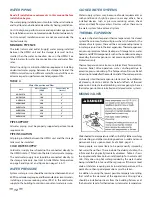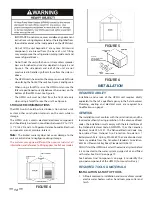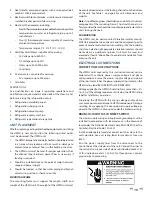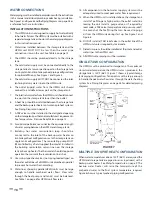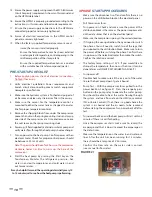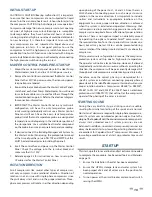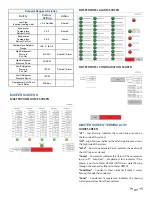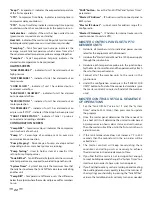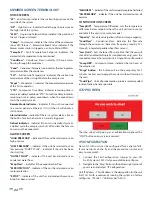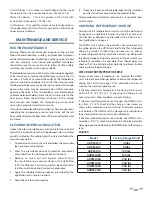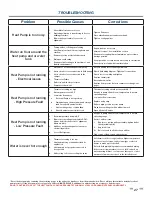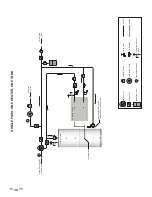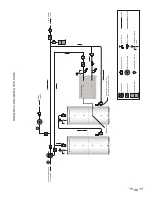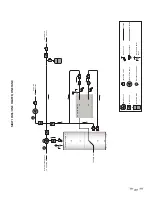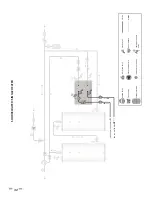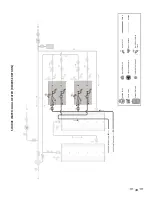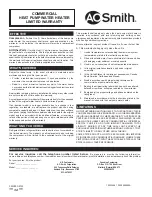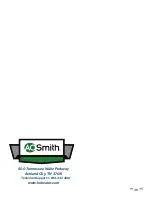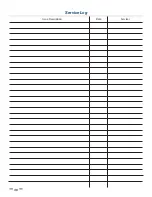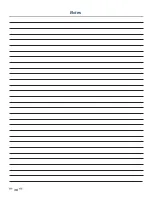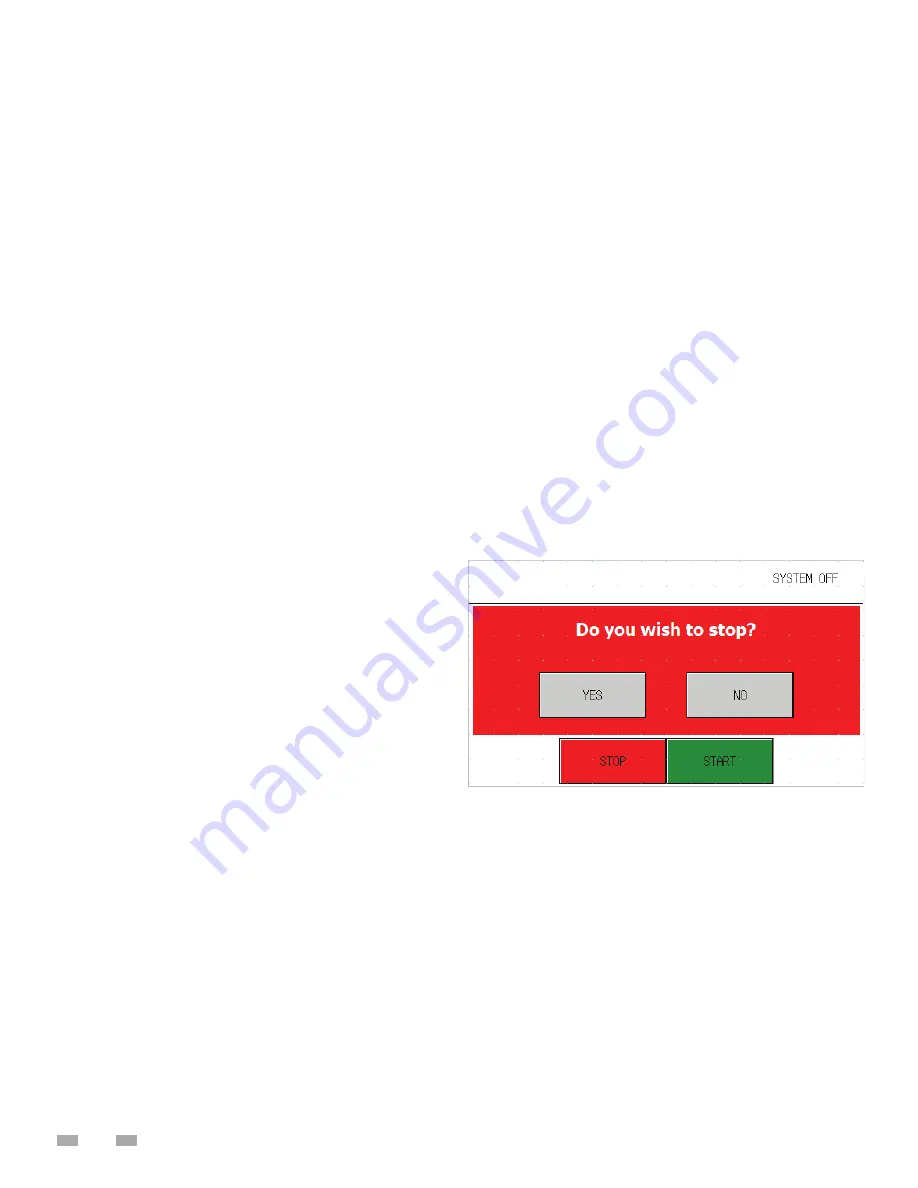
24
MEMBER SCREEN TERMINOLOGY
HOME SCREEN
“LP”
– Low Pressure: indicates the suction line pressure on the
low side of the system
“HP”
– High Pressure: indicates the discharge line pressure on
the high side of the system
“LLSV”
– Liquid Line Solenoid Valve: indicates the position of
the LLSV (open or closed)
“Comp”
– Compressor: indicates the status of the compressor
(on or off ) “Blower” – Blower Overload Status: indicates if the
blower motor starter is tripped on an Air to Water HPWH
“TempSet”
– Tank Temperature Setpoint: indicates the
desired tank temperature to be maintained
“CondFlow”
– Condenser Flow: indicates if there is water
flowing through the condenser
“Cond”
– Condenser Temperature: indicates the leaving water
temperature from the condenser
“SLT”
– Suction Line Temperature: indicates the suction line
temperature of the unit right before the compressor
“Evap1”
– Evaporator 1: indicates the evaporator temperature
of the fi rst evaporator
“CTD”
– Compressor Time Delay: indicates remaining time in
compressor delay countdown“PTD” – Pump Time Delay: indicates
remaining time in pump countdown, when the count down
starts the pump turns on
Remote Mode Indicator
– indicates if this unit is connected
to a master panel via Ethernet, if it isn’t then it will display a
start button
Alarm Indicator
– indicates if there is a system alarm, click on
the button to see which alarm is currently triggered
Defrost Indicator
– indicates if the unit is in a defrost cycle (in
a defrost cycle the compressor shuts off and lets the fans run
to warm up the evaporator)
ALARM SCREEN
“HIGH PRESSURE” –
indicates if the unit has alarmed out on
high pressure
“LOW PRESSURE”
– indicates if the unit has alarmed out on
low pressure “SHORT CYCLE” – indicates if the unit has been
short cycling
“OUTLET FLOW”
– indicates if the unit has alarmed out on
condenser water fl ow
“Evap Flow”
– indicates if the evaporator has fl ow.
“M PROTECTION”
– indicates if the unit has alarmed out on
motor protection
“ESTOP”
– indicates if the unit has alarmed out because an
Estop has been pressed
“FAILOVER 1”
– indicates if the unit’s temperature probe has failed
“OIL PRESSURE”
– indicates if the unit has alarmed out on oil
pressure
CONFIGURATION SCREEN
“TempDiff ”
– Temperature Diff erence: sets the temperature
difference below setpoint where the unit will turn on (only
available if the unit isn’t in remote mode)
“Capacity”
- Set-able value (gallons) of tanks storage capacity.
“CondFlow”
– Condenser Flow: indicates the fl ow-rate
through the condenser (based on frequency read by PLC
through integrated paddle wheel fl ow sensor)
“Low Limit”
– Sets the lowest fl ow rate limit that the unit will
shut off at (enabled for Single-Pass applications only), press the
save button to save the lower limit in a Single-Pass confi guration
“Comp HRS”
– Compressor Hours: indicates the run hours of
the compressor
“Purge” button
– this button will run the pump relay for 2
minutes to allow you to purge the system without turning on
the units
“Tank/Pipe”
- Unit call probe location, probe is recommended
inside of tank whenever possible.
STOP SCREEN
The stop screen will pop up as a confi rmation whenever the
“STOP” button on any screen is pressed.
IP CONFIGURATION
New AO Smith units can be configured for a variety of dif-
ferent networks on the fly and the procedure is quick and
easy to accomplish.
1. Connect the Sim/Configuration Jumper to your AO
Smith Systems C250 Unit you would like to confi gure.
2.
Navigate to the “Diag” button in the bottom right corner of
your screen and select “IP Confi guration”
Unit IP Address – This IP address is the designation for the unit
itself, AO Smith recommends running the system on factory
settings (ex. 192.168.1.(“Unit Number” AKA 1))
Summary of Contents for AHPM-270
Page 2: ......
Page 10: ...6 Thermostatic Expansion Valve TXV Condenser Paddle Wheel Flow Sensor Accumulator Receiver...
Page 11: ...7 WATER TO WATER CYCLE...
Page 40: ...36 Service Log Issue Description Date Servicer...
Page 41: ...Service Log Issue Description Date Servicer 37...
Page 42: ...Notes 38...
Page 43: ......
Page 44: ......



